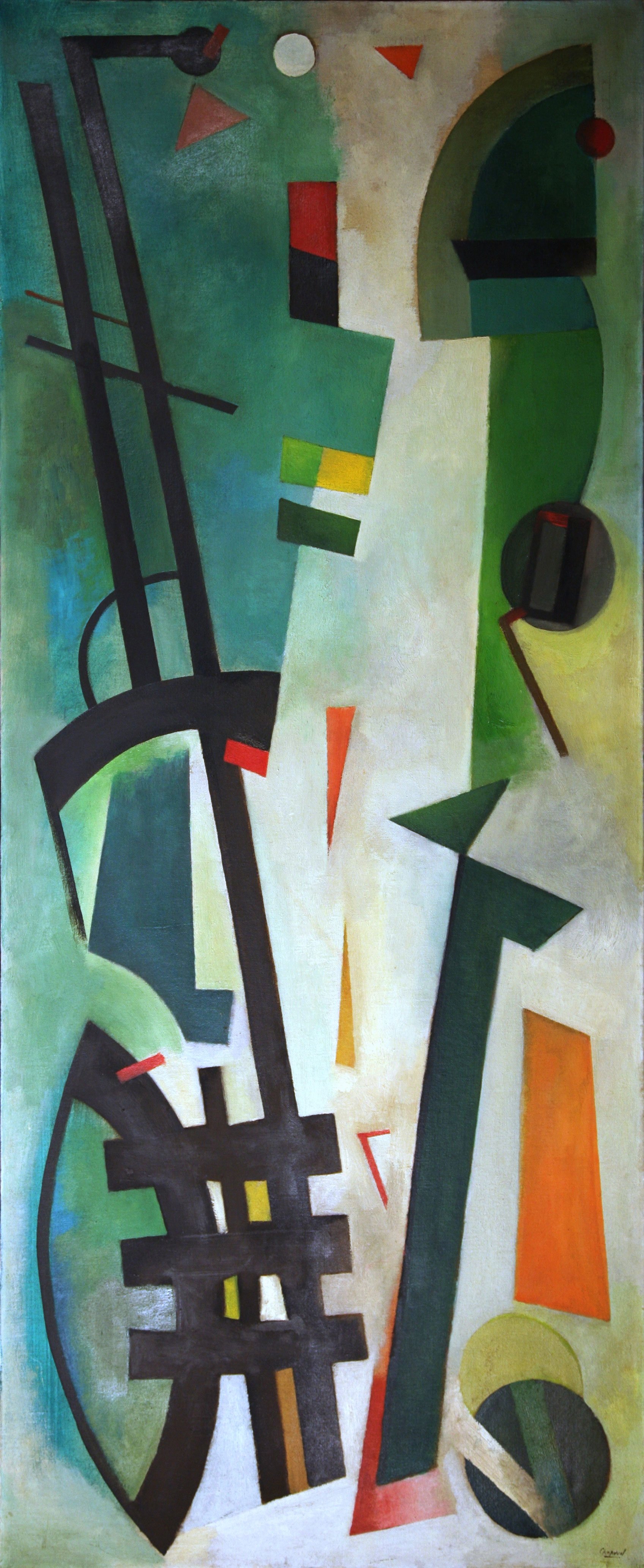Youla Chapoval: The Journey
Quad Fine Art is delighted to present Youla Chapoval: The Journey. The exhibition brings together works from the postwar period made when the artist returned to Paris from Marmande. We trace Chapoval's extraordinary life through the journeys he undertakes in life and in art.
Youla Chapoval was a Ukrainian painter, a member of the Realité Nouvelle and an artist of the Second School of Paris. Chapoval’s career was brief but urgently productive for just 9 years of painting from 1942 to 1951. He was found dead in his studio in 1951, unexpectedly by his friends and family who became worried after not hearing from Youla for several days, to this day the cause of his death remains a mystery. Despite that, he achieved great success and recognition amongst his peers, art critics and collectors.
Into Art (1938-1942)
Chapoval arrived in Paris with his family in 1924. In 1938 Chapoval obtained his baccalaureate in Philosophy. The life of an artist was not yet his plan. In November of 1938, Chapoval made an important acquaintance, Pablo Picasso. He would later become a source of inspiration and a mentor to Youla Chapoval. At that time Chapoval was on track to become a doctor and would enrol at the Faculty of Medicine in 1939. Encouraged by his friends in the art and literary circles, in 1942 Youla Chapoval decides to switch course. He leaves the medical field to pursue painting.
Figuration to cubism (1942-1945)
The early years of Chapoval’s creative career are defined by a sense of fear and urgency. He attends classes at the Academie de la Grande Chaumière in Paris and at École des Beaux-Arts in Marseille. He draws and paints as much as he can, many landscapes, still lifes and portraits. Paris became dangerous after the Nazi occupation and Chapoval left for the Non-Occupied Zone in 1942. He stayed in Marseille, Toulouse and Marmande. From his hiding, Chapoval longs for Paris as he deals with distressing news about his mother's and sister's arrest by the Nazis. In his last couple of months in Marmande he writes: ‘... Leaving Marmande will be very good for me. For me, contact with Paris has become more and more indispensable. And then to see my friends there again, all of them I hope’. He is able to return to Paris in October 1944. The transformation towards cubism begins in 1945. The figural components remain, but their reality is now governed by geometrical planes.
Analytical cubism (1945-1947)
The artist revisits the cubisms of the 1910s, his main inspiration during this time is Picasso. These are the years when Chapoval solidifies his personal touch. His work begins to attract attention in Paris. In 1947 Chapoval holds his first solo exhibition at Galerie Jeanne Bucher with great success.
Eradication of the narrative (1948-1949)
Chapoval begins to reconfigure the elements of cubism. Key developments during this period are the appeals to monochrome and the complete elimination of the subject. Figural demands give way to rigid structures of line and colour. Diagonals remain as a remnant of a disjointed perspective. The subject disappears into the intersections of geometric planes. In Personnage (1948), we can still make out the outline of a figure. Whereas in Composition Gris (1948), the subject has vanished and with it the narrative.
A new gesturality (1950-1951)
New friendships with art critic Charles Estienne and artist Hans Hartung inspire Chapoval to diverge into gestural abstraction. He also tries a new approach to painting. After developing the composition on paper the same size as the canvas, he repaints the entire work onto a new canvas in one go. There is a short-lived venture back into figuration, perhaps a need to return to narrative expression. More titles from this period reference real objects and animals rather than shapes. For example Le Poisson (Fish), 1950 and Rouge Gorge (Robin), c. 1951.
Further information
For more information about the artist and available works please follow the links below or fill in the form to request additional information for specific works.
Youla Chapoval, Still life with glass III, 1945. Oil on canvas, 55 by 46 cm.
Youla Chapoval, Still life with grapes, 1947. Oil on canvas, 46 by 38 cm.
Youla Chapoval, Composition, 1947. Oil on canvas, 46.5 by 28.5 cm.
Youla Chapoval, Personnage, 1948. Oil on board, 65 by 50 cm.
Youla Chapoval, Composition Gris, 1948. Oil on canvas, 81 by 64.5 cm
Youla Chapoval, Lances, 1949. Oil on canvas, 130 by 53 cm.
Youla Chapoval, Le Poisson, 1950. Oil on canvas, 27 by 46 cm.
Youla Chapoval, Rouge Gorge, c. 1951. Oil on canvas, 62 by 47 cm.









